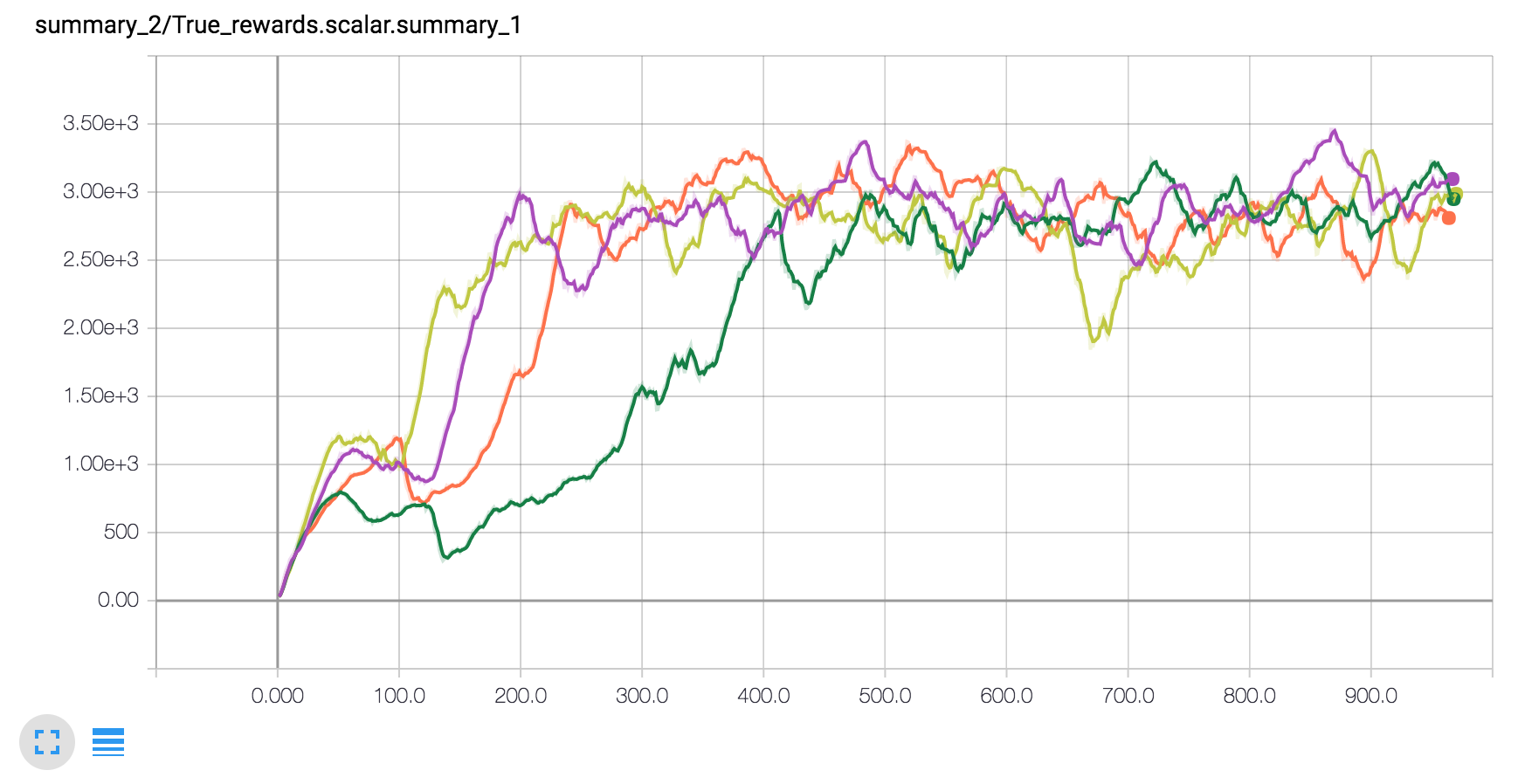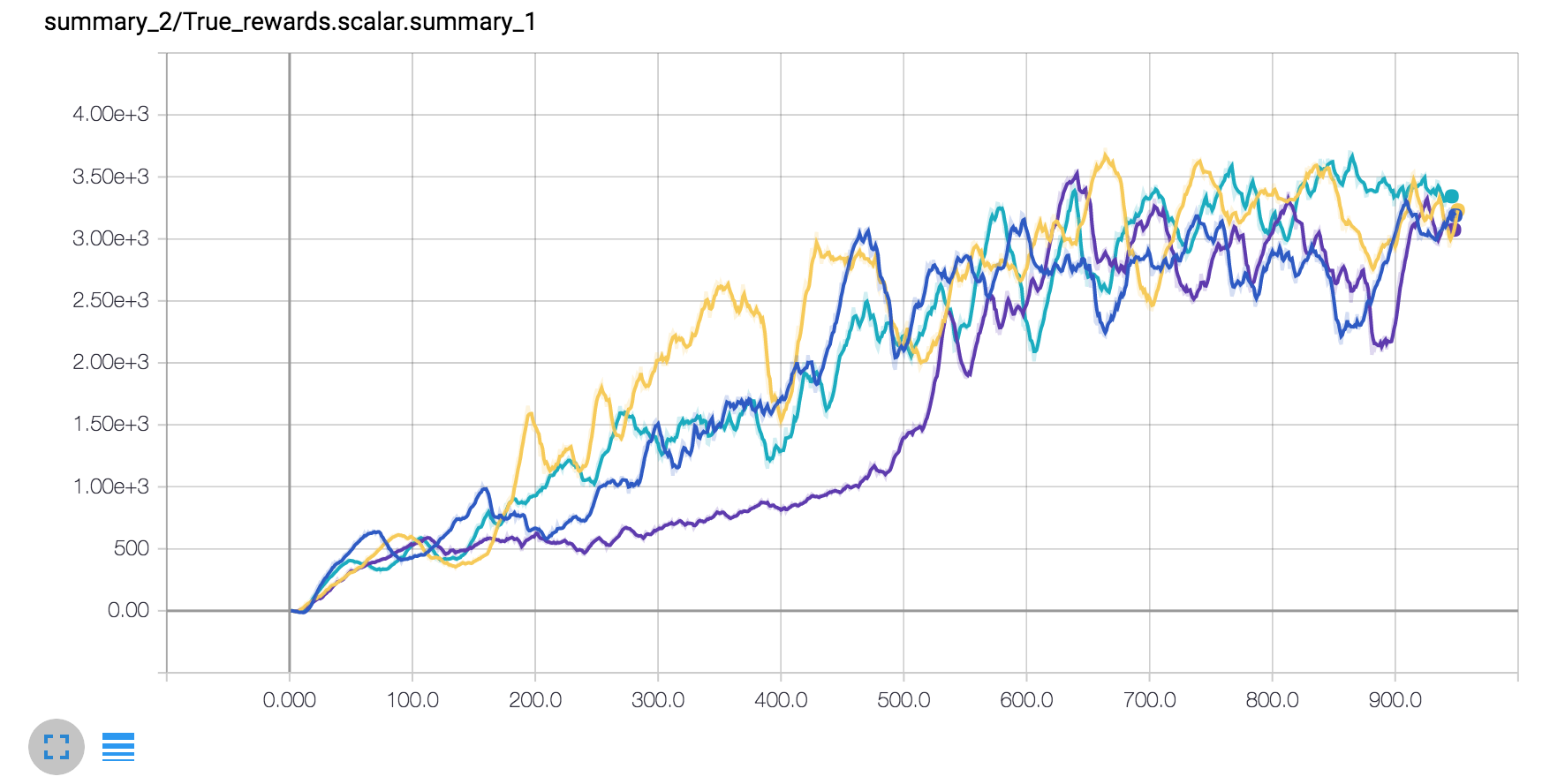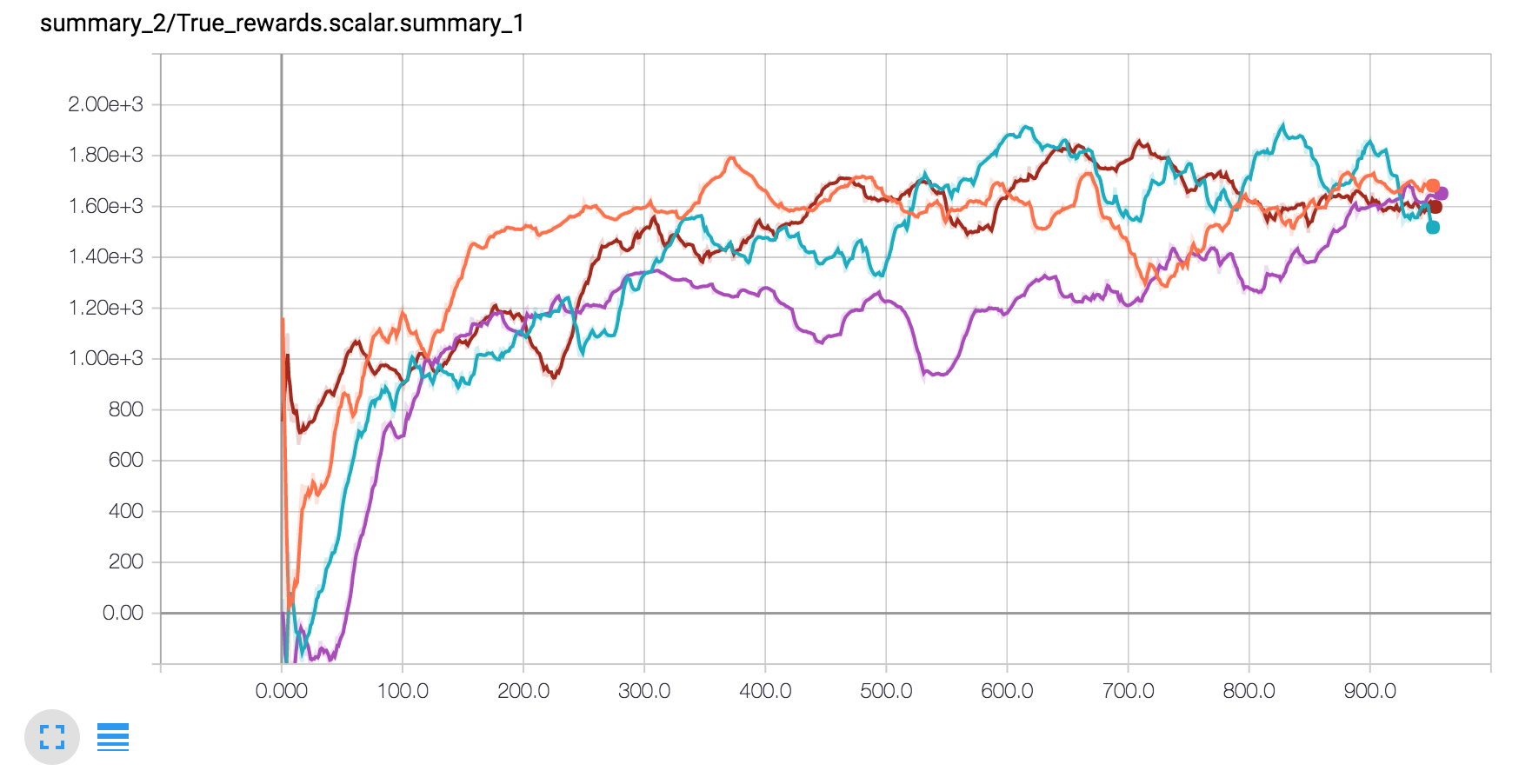andrewliao11 / Gail Tf
Programming Languages
Projects that are alternatives of or similar to Gail Tf
Check out the simpler version at openai/baselines/gail!
gail-tf
Tensorflow implementation of Generative Adversarial Imitation Learning (and behavior cloning)
disclaimers: some code is borrowed from @openai/baselines
What's GAIL?
- model free imtation learning -> low sample efficiency in training time
- model-based GAIL: End-to-End Differentiable Adversarial Imitation Learning
- Directly extract policy from demonstrations
- Remove the RL optimization from the inner loop od inverse RL
- Some work based on GAIL:
- Inferring The Latent Structure of Human Decision-Making from Raw Visual Inputs
- Multi-Modal Imitation Learning from Unstructured Demonstrations using Generative Adversarial Nets
- Robust Imitation of Diverse Behaviors
Requirements
- python==3.5.2
- mujoco-py==0.5.7
- tensorflow==1.1.0
- gym==0.9.3
Run the code
I separate the code into two parts: (1) Sampling expert data, (2) Imitation learning with GAIL/BC
Step 1: Generate expert data
Train the expert policy using PPO/TRPO, from openai/baselines
Ensure that $GAILTF is set to the path to your gail-tf repository, and
$ENV_ID is any valid OpenAI gym environment (e.g. Hopper-v1, HalfCheetah-v1,
etc.)
Configuration
export GAILTF=/path/to/your/gail-tf
export ENV_ID="Hopper-v1"
export BASELINES_PATH=$GAILTF/gailtf/baselines/ppo1 # use gailtf/baselines/trpo_mpi for TRPO
export SAMPLE_STOCHASTIC="False" # use True for stochastic sampling
export STOCHASTIC_POLICY="False" # use True for a stochastic policy
export PYTHONPATH=$GAILTF:$PYTHONPATH # as mentioned below
cd $GAILTF
Train the expert
python3 $BASELINES_PATH/run_mujoco.py --env_id $ENV_ID
The trained model will save in ./checkpoint, and its precise name will
vary based on your optimization method and environment ID. Choose the last
checkpoint in the series.
export PATH_TO_CKPT=./checkpoint/trpo.Hopper.0.00/trpo.Hopper.00-900
Sample from the generated expert policy
python3 $BASELINES_PATH/run_mujoco.py --env_id $ENV_ID --task sample_trajectory --sample_stochastic $SAMPLE_STOCHASTIC --load_model_path $PATH_TO_CKPT
This will generate a pickle file that store the expert trajectories in
./XXX.pkl (e.g. deterministic.ppo.Hopper.0.00.pkl)
export PICKLE_PATH=./stochastic.trpo.Hopper.0.00.pkl
Step 2: Imitation learning
Imitation learning via GAIL
python3 main.py --env_id $ENV_ID --expert_path $PICKLE_PATH
Usage:
--env_id: The environment id
--num_cpu: Number of CPU available during sampling
--expert_path: The path to the pickle file generated in the [previous section]()
--traj_limitation: Limitation of the exerpt trajectories
--g_step: Number of policy optimization steps in each iteration
--d_step: Number of discriminator optimization steps in each iteration
--num_timesteps: Number of timesteps to train (limit the number of timesteps to interact with environment)
To view the summary plots in TensorBoard, issue
tensorboard --logdir $GAILTF/log
Evaluate your GAIL agent
python3 main.py --env_id $ENV_ID --task evaluate --stochastic_policy $STOCHASTIC_POLICY --load_model_path $PATH_TO_CKPT --expert_path $PICKLE_PATH
Imitation learning via Behavioral Cloning
python3 main.py --env_id $ENV_ID --algo bc --expert_path $PICKLE_PATH
Evaluate your BC agent
python3 main.py --env_id $ENV_ID --algo bc --task evalaute --stochastic_policy $STOCHASTIC_POLICY --load_model_path $PATH_TO_CKPT --expert_path $PICKLE_PATH
Results
Note: The following hyper-parameter setting is the best that I've tested (simple grid search on setting with 1500 trajectories), just for your information.
The different curves below correspond to different expert size (1000,100,10,5).
- Hopper-v1 (Average total return of expert policy: 3589)
python3 main.py --env_id Hopper-v1 --expert_path baselines/ppo1/deterministic.ppo.Hopper.0.00.pkl --g_step 3 --adversary_entcoeff 0
- Walker-v1 (Average total return of expert policy: 4392)
python3 main.py --env_id Walker2d-v1 --expert_path baselines/ppo1/deterministic.ppo.Walker2d.0.00.pkl --g_step 3 --adversary_entcoeff 1e-3
- HalfCheetah-v1 (Average total return of expert policy: 2110)
For HalfCheetah-v1 and Ant-v1, using behavior cloning is needed:
python3 main.py --env_id HalfCheetah-v1 --expert_path baselines/ppo1/deterministic.ppo.HalfCheetah.0.00.pkl --pretrained True --BC_max_iter 10000 --g_step 3 --adversary_entcoeff 1e-3
You can find more details here, GAIL policy here, and BC policy here
Hacking
We don't have a pip package yet, so you'll need to add this repo to your PYTHONPATH manually.
export PYTHONPATH=/path/to/your/repo/with/gailtf:$PYTHONPATH
TODO
- Create pip package/setup.py
- Make style PEP8 compliant
- Create requirements.txt
- Depend on openai/baselines directly and modularize modifications
- openai/robotschool support
TroubleShooting
- encounter
error: Cannot compile MPI programs. Check your configuration!!!or the systme complain aboutmpi/h
sudo apt install libopenmpi-dev
Reference
- Jonathan Ho and Stefano Ermon. Generative adversarial imitation learning, [arxiv]
- @openai/imitation
- @openai/baselines



